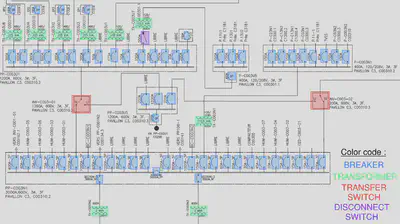Project: Development of artificial intelligence techniques for the automated identification of electrical energy assets


Status
Completed (2020-2022)
Type
Master’s
Team
- Simon Giard-Leroux1 (2020-2022)
- Guillaume Cléroux1 (summer 2021 and winter 2022)
- Alex Chorel-Campanozzi1 (summer 2021)
- Achille Lanctôt-Saumure1 (fall 2021)
- Shreyas Sunil Kulkarni2 (2020-2021)
- François Bouffard3 (2020-2022)
- Martin Vallières1 (2020-2022)
1 Computer science department, Université de Sherbrooke, Sherbrooke (QC), Canada
2 Birla Institute of Technology and Science, Pilani, Inde
3 Electrical and computer engineering department, McGill University, Montreal (QC), Canada
Note
This project is not related to the field of medical informatics, but it involves object detection principles that will be applied to medical imaging in the future.
Objective
Conventional electrical engineering still relies on working methods based on manual analysis of photos and drawings, which can be slow and prone to human error. We want to apply new artificial intelligence (AI) and machine learning technologies to the field of classical electrical engineering to facilitate the interpretation of drawings and photos of electrical equipment. Subsequently, the interpretation of this information would allow the construction of computational models to accelerate the manual work required to perform short-circuit and arc studies, while reducing the risk of human error.
The first objective of this project will be to detect the type of electrical fuses in photos taken by electrical engineers during site surveys in places such as industrial buildings. To this end, photos of electrical fuses collected during previous projects conducted by the engineering firm CIMA+ and photos from the Web (Google Images) will be used to train object detection algorithms. The second objective of this project will be to detect equipment symbols on electrical drawings, detect the descriptive text linked to each symbol, detect the links between symbols and automate the creation of models that can be imported into a calculation software.
This automation will provide greater accuracy and reduce the time required to interpret electrical installation surveys, thereby increasing the efficiency of the electrical engineer’s work and the safety of the public regarding electrical installations.